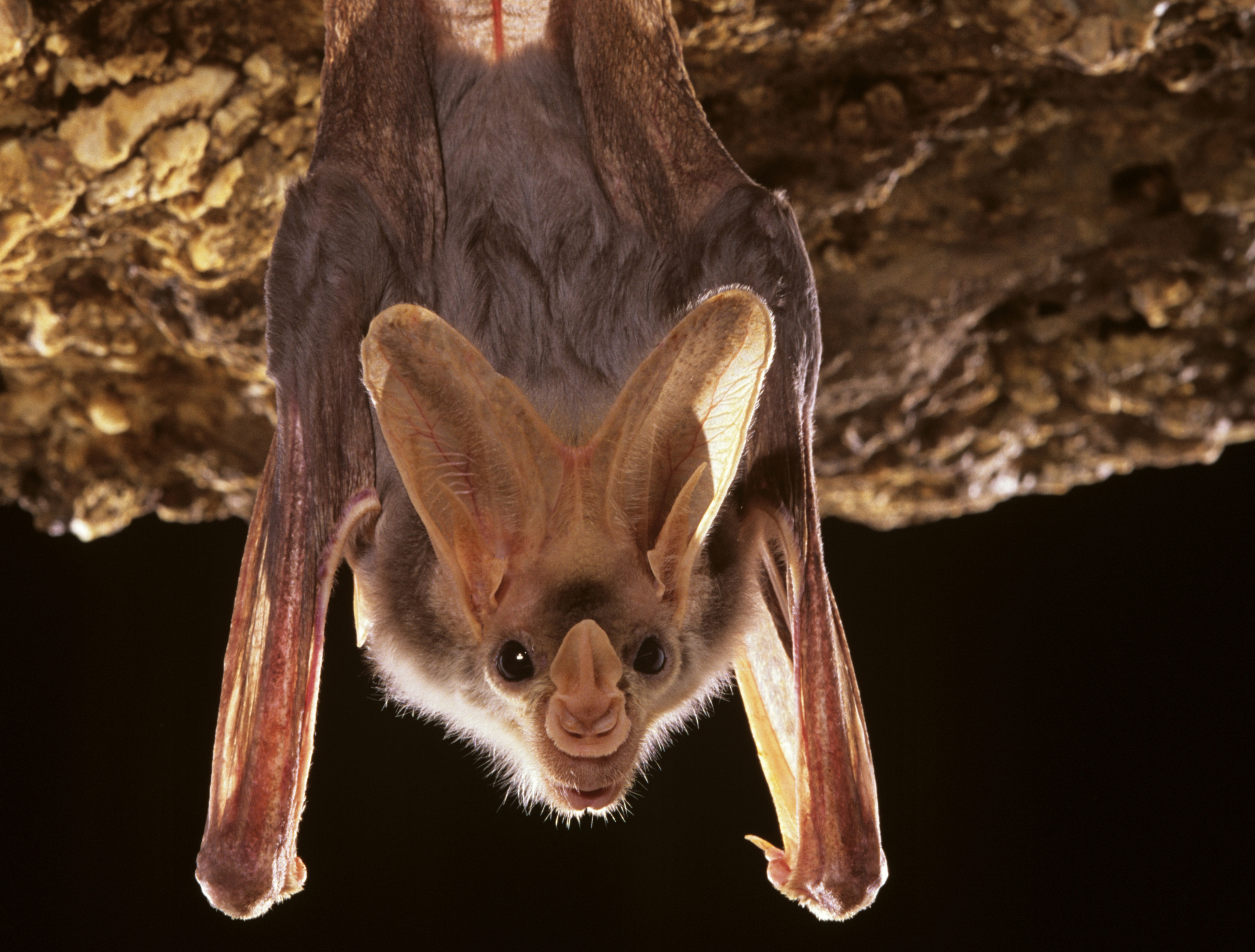Ghost bat is a flying mammal of northern Australia known for its whitish fur, long ears, and large, black eyes. The ghost bat is also known as the Australian false vampire bat. However, it does not drink blood. The ghost bat gets its name from its pale coloring and its thin, translucent wing membranes, which appear ghostly in the moonlight. Something that is translucent allows light to pass through. The wings of a ghost bat can spread to about 20 inches (50 centimeters).
The ghost bat has pale skin with white or light gray fur in the front and light or dark gray fur on its back. It has a large, leaf-shaped nose and large ears. It measures up to about 5 inches (13 centimeters) in length. An adult ghost bat weighs about 5 ounces (140 grams).

Ghost bats roost alone or in small colonies in caves, crevices, and tunnels. They roost during the day, coming out only at night to look for food. They hunt by using echolocation to find prey in the dark. In echolocation, the bat makes high-pitched sounds and senses the echoes from its surroundings. This method is somewhat like a ship using sonar to detect a submarine. But ghost bats do not rely on echolocation alone. They often use their large eyes and long ears to help them find prey. They scan the ground and listen for small animals scurrying about.
The ghost bat preys on insects, frogs, lizards, small rodents, birds, and even other bats. It silently and swiftly swoops down on its prey, wrapping the victim in its wings. It then kills the prey with bites to the neck and head from its sharp teeth. The bat carries the animal away with its large clawed feet to an eating spot. A ghost bat can kill and carry prey that weigh almost as much as itself. Owls and snakes sometimes prey upon ghost bats.
Female ghost bats give birth to a single young, called a pup, each year. Males and females live separately during the birthing season and while the young are being weaned. Mother ghost bats form large nursery colonies. They may leave the young in the roost while they go hunting. Young ghost bats begin flying about seven weeks after birth. They are usually weaned at about three months old. Juvenile ghost bats hunt with their mothers until they are completely independent. Ghost bats can live for about 23 years in captivity.
Ghost bats do not attack human beings and avoid contact with people. However, human activities have destroyed much of the bat’s habitat, including roosting sites and hunting grounds. Many ghost bats die from flying into such hard-to-see obstacles as barbed wire fences and electric power lines.
